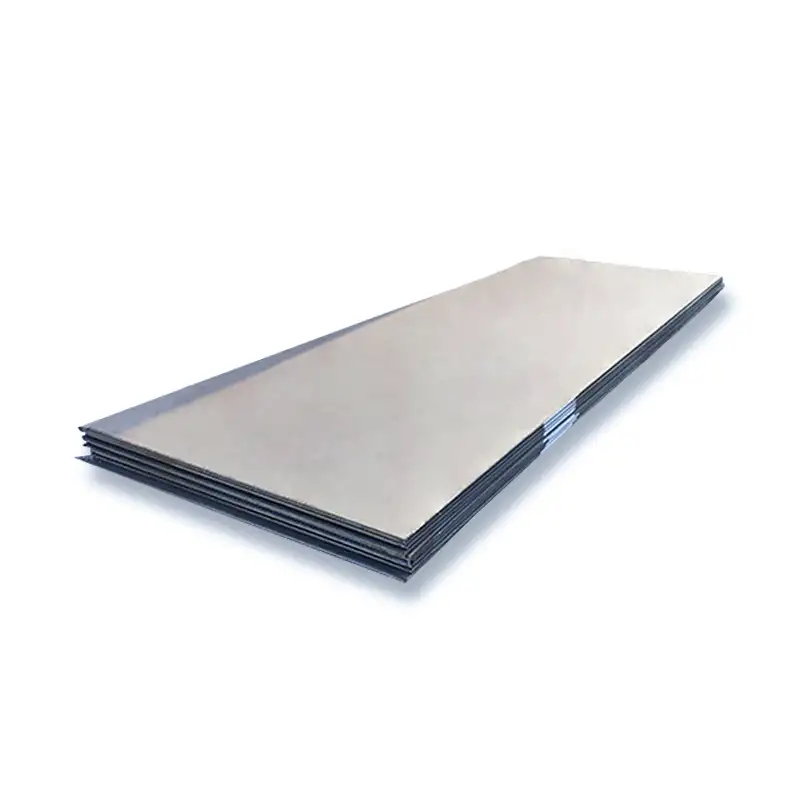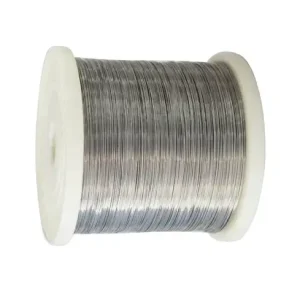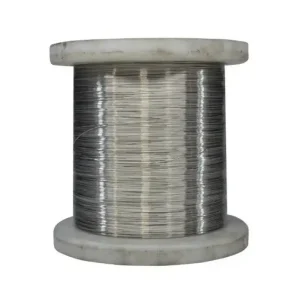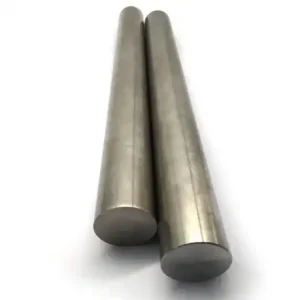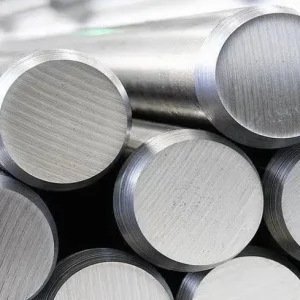A572 (Grade 50) / S355JR / Q345 represent globally popular high-strength low-alloy structural steels offering a strong balance of yield strength, ductility, weldability, and cost-efficiency; they are largely interchangeable for many structural applications when chemistry and thickness limits match, and MWAlloys offers factory-direct supply from China with competitive 100% factory pricing and rapid stock delivery.
What the three names mean
-
ASTM A572 refers to the American standard “Standard Specification for High-Strength Low-Alloy Columbium-Vanadium Structural Steel.” The specification includes several grades; Grade 50 (often written A572-50) is widely used for structural plates and sections.
-
S355JR comes from the European norm EN 10025-2; “S” indicates structural steel, “355” denotes the nominal minimum yield strength in MPa for thinner plate sizes, and “JR” denotes an impact test value of 27 J at room temperature.
-
Q345 is the Chinese GB/T designation under GB/T 1591 (high-strength low-alloy structural steel). The number 345 links to a nominal yield figure (345 MPa for thinner sections). Multiple subgrades (Q345A/B/C/D/E) exist, each with slightly different chemistry and toughness criteria.
Practical takeaway: In many structural applications engineers accept A572 Gr50, S355JR and Q345B as near equivalents provided the specific chemical limits, thickness-dependent yield/tensile data and impact requirements meet project specifications. Confirm certificate details before substitution.
Quick technical comparison and equivalence
-
Yield strength: A572 Grade 50 → 345 MPa (50 ksi) minimum; S355JR → 355 MPa minimum for common thicknesses; Q345 → typically 345 MPa for ≤16 mm. These small numerical differences do not always change practical interchangeability, but designers must check allowable stresses, weld procedures, and thickness effects.
-
Chemistry: All three are low-carbon, micro-alloyed steels with controlled Mn, Si and low P/S. Q345 and A572 may permit trace Nb/V/Ti additions for microalloy strengthening; EN S355 family uses carbon-equivalent limits and CEV control for weldability.
-
Use cases: Structural beams, welded frames, bridge components, heavy machinery bases, welded platework, and general fabrication. Q345 is common across Chinese infrastructure projects; S355 is standard in Europe; A572 is common in North America.
Typical chemical composition
Below are conservative maximum or typical limits commonly used in procurement documents. Always require mill test reports (MTC) for purchased material.
Table: Typical chemical composition limits (wt %, max unless stated)
| Element | A572 (Grade 50) typical | S355JR (EN 10025-2) typical | Q345 (GB/T 1591) typical |
|---|---|---|---|
| C (Carbon) | ≤ 0.23 (typical max) | ≤ 0.24 (max) | ≤ 0.20 (max for many subgrades) |
| Si (Silicon) | ≤ 0.40 (depends on thickness) | ≤ 0.55 (max) | ≤ 0.50 (max) |
| Mn (Manganese) | ≤ 1.35 (typical) | ≤ 1.60 (max) | 1.00–1.60 (typical range) |
| P (Phosphorus) | ≤ 0.030–0.040 | ≤ 0.035–0.040 | ≤ 0.025–0.040 (varies by subgrade) |
| S (Sulfur) | ≤ 0.030–0.050 | ≤ 0.035–0.040 | ≤ 0.020–0.040 (varies) |
| V, Nb, Ti (micro-alloy) | May be present in micro-alloyed A572 variants | Present in some S355 variants for toughness control | Allowed in Q345 (small amounts) to control strength/toughness. |
| Cu, Ni, Cr, Mo | Typically low trace amounts; controlled by standard limits | Cu ≤0.55, Ni small, Cr/Mo low | Limited to low levels per GB/T tables. |
Source notes: The ASTM A572 specification covers grade definitions and tests; EN 10025-2 lists chemical tables and CEV limits; GB/T 1591 lists Q345 subgrade chemistry. For procurement use the specific standard edition listed on the purchase order.
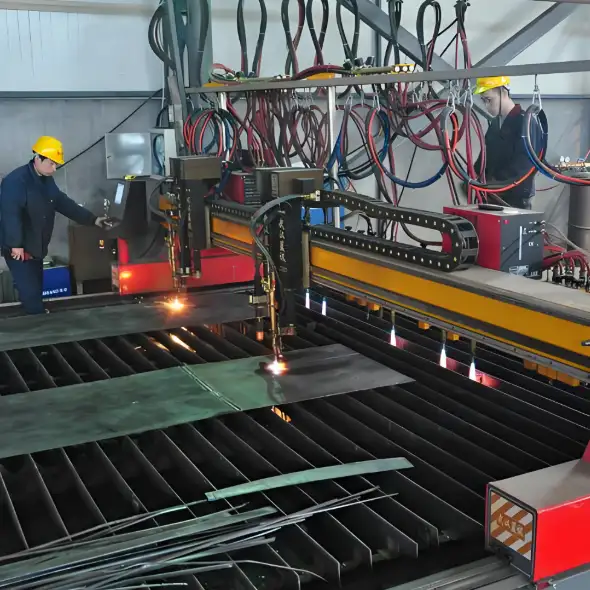
Mechanical properties and testing
Mechanical performance depends on thickness, heat-treatment route, and the specific subgrade. Below are typical minimums used for comparison.
Table: Representative mechanical data (typical minimums)
| Property | A572 Grade 50 (typ.) | S355JR (typ.) | Q345 (typ.) |
|---|---|---|---|
| Minimum yield strength (MPa) | 345 (50 ksi) | 355 (depends on thickness) | 345 (for thin plates ≤16mm; reduces with thickness) |
| Tensile strength (MPa) | ~450–620 (depending on thickness & heat) | 470–630 (typical) | 470–630 (typical range quoted in GB/T) |
| Elongation (%) | ≥18–22 (thickness dependent) | ≥22 (thin material typical) | ≥20–21 (varies with thickness) |
| Charpy impact | Not universally required; selected grades/conditions need KV values | JR = 27 J @ +20°C (minimum) | Many Q345 subgrades carry required impact values (e.g., Q345B 20 J @ −20°C or specified) |
Testing and certificates: Always request an EN/ASTM/GB mill test report that lists chemical analysis, tensile test results, impact test certificates when required by project specification, and heat number traceability.
Specification table
Table: Core specification summary for procurement
| Clause | Typical procurement wording |
|---|---|
| Standard | ASTM A572/A572M (Grade 50) or EN 10025-2 (S355JR) or GB/T 1591 (Q345B) — specify year edition. |
| Delivery condition | Hot-rolled, normalized or as-rolled; specify normalized (N) or thermomechanically treated (+N/+AR) if required. |
| Thickness tolerance | Follow standard tables or state ± tolerance per contract |
| Mechanical tests | Tensile test per standard, yield/tensile, elongation |
| Impact tests | State Charpy energy, temperature, specimen orientation if required (JR/J0/J2 designations) |
| Certification | Mill Test Certificate (EN 10204 3.1 or 3.2 where required) |
| Surface finish | Mill finish, shot-blasted, primed or painted per order |
| Non-destructive tests | UT or RT on heavy plates on purchaser’s request |
Note: Use EN 10204 3.1/3.2 language for traceability and independent verification.
Sizes and weight
Weight formula: weight (kg/m²) = thickness (mm) × 7.85 (kg/m² per mm). This quick rule helps budgeting and shipping calculations.
Table: Common plate thickness vs weight per m²
| Thickness (mm) | Weight per m² (kg) |
|---|---|
| 3 | 23.55 |
| 6 | 47.10 |
| 10 | 78.50 |
| 12 | 94.20 |
| 16 | 125.60 |
| 20 | 157.00 |
| 25 | 196.25 |
| 30 | 235.50 |
| 40 | 314.00 |
| 50 | 392.50 |
| 100 | 785.00 |
Typical plate widths and lengths (factory stock): widths 1500 mm, 2000 mm, 2200 mm, 2500 mm; lengths 3000 mm, 6000 mm, 12000 mm. Custom cutting and slitting available at the mill. Always confirm actual net weights with mill certificates and account for packaging/packing.
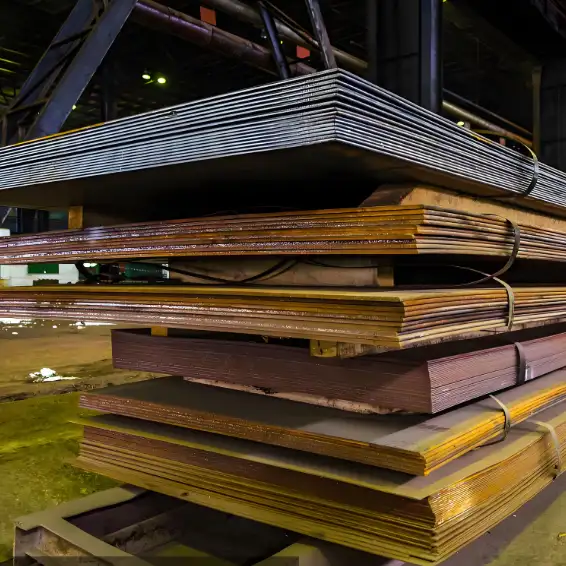
Manufacturing, forming, weldability, fabrication notes
-
Hot rolling is the common production route for these plates. Thermomechanical rolling or controlled rolling improves toughness.
-
Welding: All three grades exhibit good weldability with standard consumables; carbon equivalent (CEV or Pcm) must be checked for preheat/post-heat needs. EN 10025 places limits on CEV to guide weld procedures.
-
Forming/bending: Ductility supports conventional forming up to specified bend radii; consult the mill for bend testing data for thick plates.
-
Heat treatment: Normalizing may be requested when impact toughness at lower temperatures is required. Micro-alloyed variants achieve strength through chemistry and rolling rather than quenching.
Surface finish, coating, corrosion protection, inspection
-
Surface finishes: Mill finish (hot rolled, light scale), shot-blasted, primed, or coated per order. For exterior structures coatings (zinc primers, epoxy) are standard.
-
Inspection: Visual, dimensional checks, UT for internal defects on thick plates, and hardness testing when needed. For critical structural parts request third-party inspection and EN 10204 certification.
Typical applications
-
Structural steelwork (frames, columns, beams)
-
Bridges and civil infrastructure components
-
Shipbuilding and heavy fabrication where high strength and weldability matter
-
Machinery bases, trailer floors, heavy equipment frames
-
Where weight reduction with retained strength helps design efficiency.
2025 price comparison: USA, Europe, China
Market context (short): 2025 steel markets showed volatility driven by tariffs, regional demand variations, and changing iron ore/coking coal costs. U.S. duty measures pushed domestic spot prices higher in 2025; Europe saw mixed movement; Chinese export prices remained competitive while local spot prices oscillated. These macro drivers affect plate and coil pricing.
Important purchasing note: Plate price includes raw material (HRC/plate base), processing, coating, freight, and local duties. Use the ranges below only for early budgeting; request current firm quotes from suppliers (MWAlloys provides live quotes on request).
Table: Representative 2025 indicative price ranges — structural plate (USD per metric ton, typical spot ranges mid-2025)
| Region | Indicative range (USD / tonne) | Notes / source |
|---|---|---|
| USA (domestic plate / HRC basis) | $840 – $1,000 / t (spot variation) | U.S. spot and HRC indices showed mid-2025 levels near $840–$975/ton (short/metric differences apply). |
| Europe (domestic ex-works) | €500 – €650 / t (≈ $540 – $700 / t depending on FX) | European HRC/plate indices were around €530 / t in some reports; convert to USD when budgeting. |
| China (FOB export, plate/3mm–12mm) | $460 – $520 / t FOB (export SS400/HRC benchmarks seen in May 2025) | China export prices for common steel products were reported near $460–480/t FOB in late spring 2025. Mysteel reports and export surveys indicate competitiveness. |
Interpretation: Domestic finished plate delivered prices in each market will exceed HRC or FOB plate numbers after processing, local taxes, transport, and margins. Tariff policy changes can rapidly shift landed costs. For a direct factory purchase from China by MWAlloys the FOB figure is a starting point for negotiation; we include packing, export docs, and quick stock delivery options.
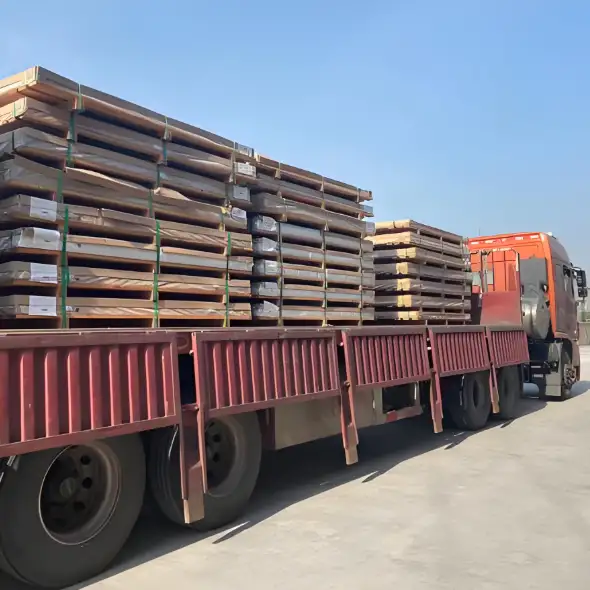
Procurement tips, quality checks, and what MWAlloys offers
Buyers checklist (minimum):
-
Require MTC (EN 10204 3.1 or 3.2) with full chemical and mechanical test data.
-
Confirm grade sub-designation (A572 Grade 50, S355JR, Q345B etc.) and the precise standard edition.
-
For welded structures, request CEV/Pcm values and any required preheat instructions.
-
Inspect thickness-dependent yield and tensile values on the certificate; many standards reduce minimum yield with greater plate thickness.
-
If impact toughness is critical, demand Charpy V-notch data at specified temperatures and orientations.
Why buy from MWAlloys (short commercial pitch):
MWAlloys is a manufacturer-partner that stocks A572/S355JR/Q345 plates in common sizes, provides 100% factory pricing, and maintains fast stock delivery for standard items. We issue full mill test reports, offer custom cutting and edge preparation, and support inspection by third-party agents on request. For project orders we can provide batch traceability, packing photos, and export documentation. Contact MWAlloys for live availability and a firm quote.
FAQs
-
Q: Can I replace S355JR with A572 Grade 50 on my project?
A: Often yes, if the MTCs show equivalent yield/tensile and impact requirements meet the project. Confirm thickness limits and welding procedure specifications before substitution. -
Q: Which grade gives better weldability?
A: All three show good weldability when carbon equivalent is controlled. If tight specifications apply, choose material with lower CEV or plan preheat/post-heat. -
Q: How does thickness change strength?
A: Many standards reduce minimum yield with increasing plate thickness; consult standard tables and check the MTC for the heat/plate in question. -
Q: Are these steels suitable for offshore or highly corrosive environments?
A: Not by themselves. Use protective coatings, weathering grades, or stainless/duplex alternatives for aggressive environments. Specialist design review required. -
Q: What certificate should I ask for?
A: EN 10204 3.1 or 3.2 mill test certificate with chemical and mechanical results plus heat/coil number traceability. -
Q: How to calculate plate weight quickly?
A: weight(kg/m²) = thickness(mm) × 7.85. Multiply by area for total mass. (Example: 10 mm plate = 78.5 kg/m².) -
Q: Is Q345 always the same as A572 Grade 50?
A: Q345 commonly maps to A572 Gr50 in many procurement contexts, but chemistry, toughness, and thickness curves can differ. Verify the subgrade and certificate. -
Q: What turnaround time can I expect from MWAlloys for stocked plate?
A: For stocked items MWAlloys typically dispatches within days depending on destination; for large or cut-to-size orders lead times depend on factory schedules and shipping. Contact sales for confirmation. -
Q: How will 2025 market volatility affect my order?
A: Tariffs, freight rates, and raw material costs can alter quoted prices quickly. Lock pricing with a confirmed order and consider hedged shipping options. -
Q: Can MWAlloys provide cut pieces with certified weld-prep?
A: Yes. Cutting, bevelling, drilling, and additional fabrication services can be supplied, with pictures and third-party inspection on request.
Authoritative references
- ASTM A572/A572M — Standard Specification for High-Strength Low-Alloy Columbium-Vanadium Structural Steel (ASTM)
- SteelConstruction.info — Steel material properties and EN 10025 overview (Steel Construction Institute)
- GB/T 1591-2018 (English summary) — High strength low alloy structural steels (Chinese National Standard reference)
- World Steel Association — global steel industry data and best practice resources

